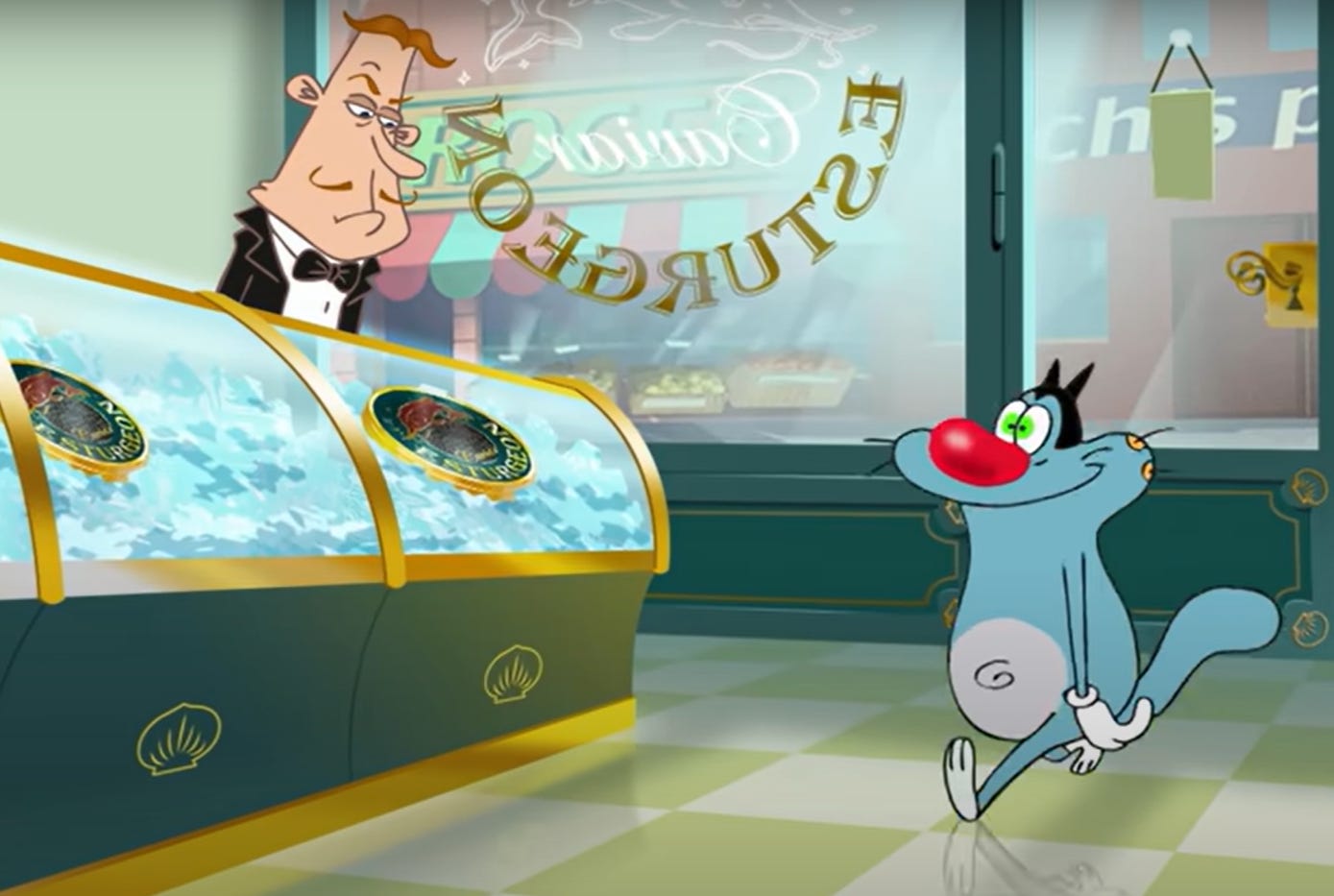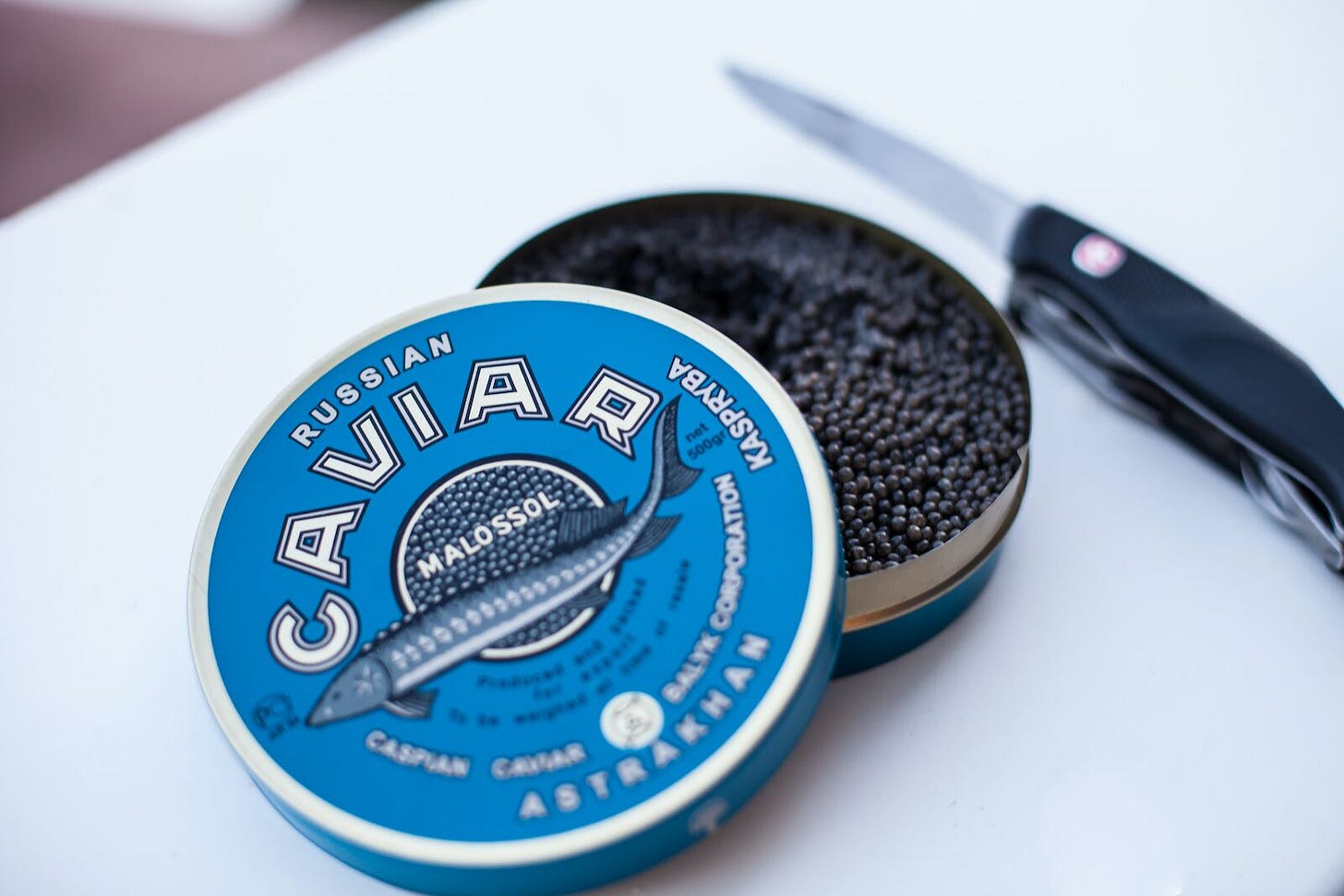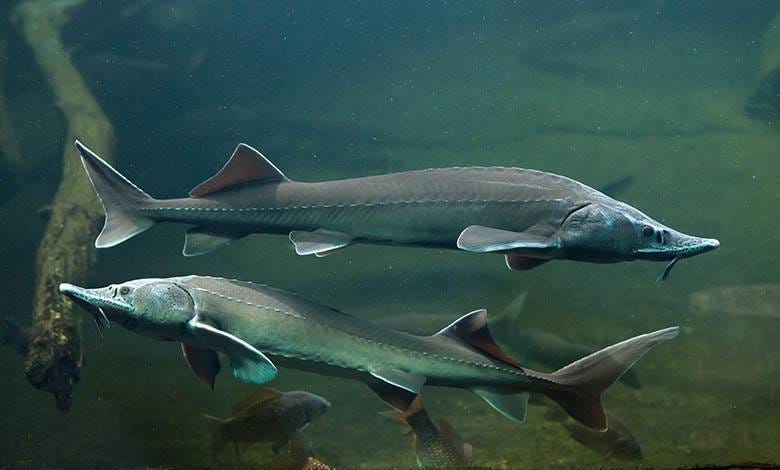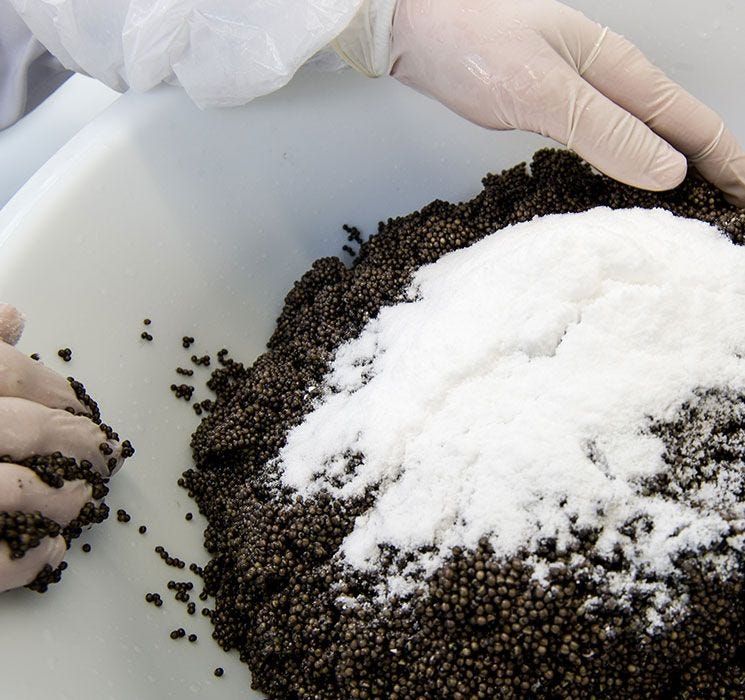You might have seen the Oggy and the Cockroaches episode where Oggy tries to buy Caviar for his date night and eventually harvests it from a Sturgeon fish. Not watched it yet? Click here to watch
But have you ever wondered how it is produced and why it’s so expensive? In today’s edition we’ll check out how Caviar is produced.
But What is Caviar? 🤔
Caviar, originally from Persian 'khâvyâr', meaning 'egg-bearing', is a food consisting of salt-cured roe (eggs) from the fish family Acipenseridae. All caviar is fish roe, but not all fish roe is caviar. To be classified as caviar, caviar must come from sturgeon fish and it must be unfertilized. All caviar should be clearly labeled, including information about its grade, variety, and country of origin. It's considered a delicacy and is eaten as a garnish or spread.
The Making of Caviar 🏭
The process of making caviar is more fascinating than you might think:
1.Harvesting the Eggs: Caviar can only come from sturgeon, most frequently from beluga, sterlet, kaluga, osestra, or American white sturgeon. The fish is first rinsed before it is split open to reveal an entire cavity filled with greenish-brown roe. A sturgeon can carry up to 700,000 of these eggs!
There are two main ways for harvesting and let's be honest, they're both a lil' controversial:
- The Classic (But Not Cool): The sturgeon is killed. Her eggs are then carefully removed and prepped. Not the most sustainable or ethical option.
- The Modern Move: Some farms use a C-section or massage technique to extract the eggs while keeping the fish alive. It's possible to stun a fish, create a small incision, extract the roe or the ovaries, and then stitch the fish back up, allowing it to continue producing eggs. However, in most cases, the fish is killed before the extraction takes place in order to get maximum roe.
2. Extracting the Eggs: The workers lift the eggs out of the fish, revealing the purple bowels inside. The eggs come out in a log shape, sticking tightly together.
3. Cleaning and Sorting: Once the eggs are removed, they’re piled into a dish and rinsed gently with water. Next, the worker massages them through a sifter in handfuls to separate the eggs from the egg sack.
4. Salting: One crucial step that transforms the eggs from sturgeon roe to caviar is salting. The eggs are rinsed again in even more water and then packed directly into tins.
But Why is Caviar so Expensive? 💰
Sturgeon Blues: Caviar comes from sturgeon, a prehistoric fish that takes FOREVER to mature (like, 10 years!). The type of sturgeon that the caviar comes from generally sets the price. Types of sturgeon that can be farmed like osestra and white sturgeon are typically more affordable. Then there’s beluga caviar, which can only be caught in the wild. Plus, overfishing almost wiped them out, making them super rare.
Eggs-travagant Care: Raising sturgeon ain't cheap. They need fancy tanks, clean water, and a chef's kiss diet.
Hand-Crafted Caviar: Forget machines! Separating the eggs from the membrane is a delicate dance done by hand, like a sushi master with fishy pearls.
But What About the Taste?✨
Caviar's flavor depends on the sturgeon species, but generally, it's buttery, salty, and oh-so-smooth. Think of it like tiny flavor bombs for your tongue.
But Is It Worth It?
That's up to you! Caviar is a luxury food, and with the price tag, it's definitely a special occasion treat. But hey, if you're feeling fancy and want to impress your tastebuds (or your date!), go for it! ✨
Now you know why caviar is the king (or queen!) of fish eggs!
Until next time, #StayCurious
Alan Sam








